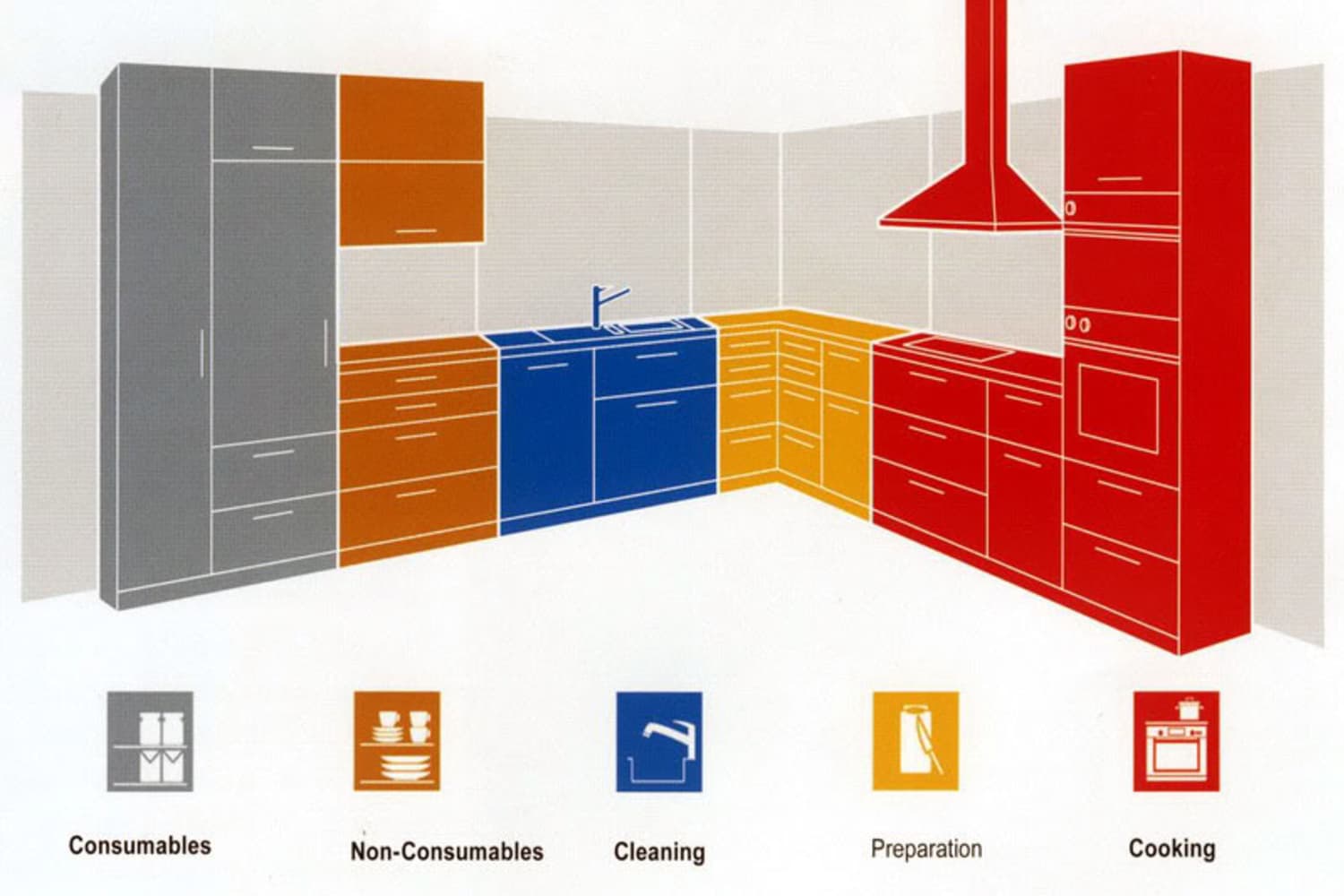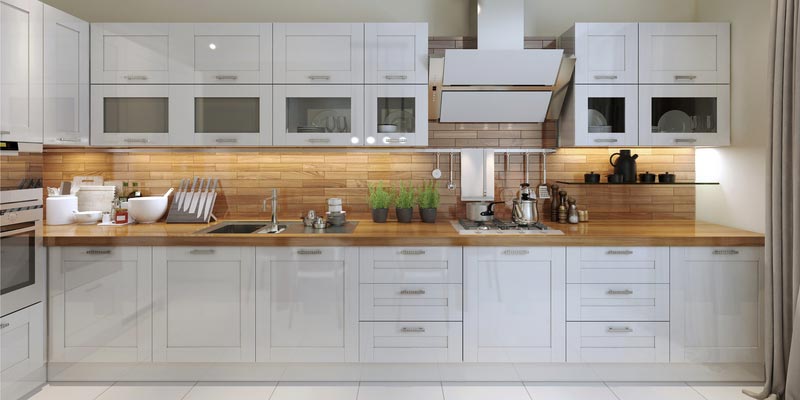The number of kitchen cabinets needed depends on kitchen size, layout, and storage requirements. Consult a professional for personalized advice.
Planning the right number of kitchen cabinets is essential for an efficient and organized space. Consider factors such as kitchen size, layout, and your personal storage needs. Smaller kitchens may require fewer cabinets, while larger spaces can accommodate more. Assessing your cooking habits and storage preferences can also guide your decision.
Think about the types of items you’ll store, including appliances, cookware, and pantry goods. Proper cabinet placement can enhance accessibility and workflow. Consulting with a kitchen designer can provide tailored recommendations. Investing time in planning ensures a functional and aesthetically pleasing kitchen, meeting all your storage requirements.
Table of Contents
ToggleAssessing Kitchen Space
Understanding how many kitchen cabinets you need starts with assessing your kitchen space. This process involves measuring dimensions and identifying key areas for storage. By doing so, you ensure that your kitchen is functional and organized.
Measuring Dimensions
Begin by measuring the dimensions of your kitchen. Use a tape measure to get accurate measurements of the walls, floor, and ceiling height.
- Measure the length and width of the kitchen floor.
- Measure the height of the walls from floor to ceiling.
Write these measurements down. They will help you determine the available space for cabinets.
Identifying Key Areas
Next, identify key areas in your kitchen. Focus on places where cabinets are most needed. These include:
- Cooking Area: Above and below the stove.
- Sink Area: Under the sink for cleaning supplies.
- Preparation Area: Near countertops for utensils and dishes.
Make a list of these key areas. This helps you figure out where to install your cabinets.
Determining Cabinet Types
Choosing the right kitchen cabinets can be challenging. Knowing the types available helps. Let’s explore the main types of cabinets you need.
Base Cabinets
Base cabinets sit on the floor and support countertops. They are essential for storage and workspace.
Common features include:
- Drawers for utensils
- Cabinet doors for larger items
- Shelves for pots and pans
They often include sink cabinets and corner cabinets. Consider your kitchen layout. You might need specialized base cabinets.
Wall Cabinets
Wall cabinets mount on the wall. They provide extra storage without using floor space.
Key features of wall cabinets:
- Storing dishes and glassware
- Keeping spices and small items
- Open shelving for display items
Wall cabinets come in various heights and depths. Choose sizes that fit your space. Ensure they are easy to reach.
Tall Cabinets
Tall cabinets extend from floor to ceiling. They maximize vertical storage space.
Common uses for tall cabinets:
- Pantry storage for food and supplies
- Utility cabinets for cleaning tools
- Integrated oven or microwave space
Tall cabinets often include multiple shelves and drawers. They can also house built-in appliances. Plan their placement carefully.
Functionality And Storage Needs
Understanding your functionality and storage needs is crucial when planning your kitchen cabinets. Each item in your kitchen requires a specific place. Proper organization helps in keeping the kitchen tidy and efficient. Think about the space for cooking supplies, dinnerware, and pantry storage.
Cooking Supplies
Your cooking supplies include pots, pans, utensils, and gadgets. These items need easy access. Consider cabinets with deep drawers. They offer more space and better organization. Shelving systems can also help in maximizing space. Use pull-out racks for easy reach.
| Item | Suggested Storage |
|---|---|
| Pots and Pans | Deep Drawers |
| Utensils | Drawer Organizers |
| Gadgets | Pull-Out Racks |
Dinnerware
Dinnerware includes plates, bowls, and glasses. These items need a safe and organized space. Upper cabinets are ideal for storing dinnerware. Use dividers to separate plates and bowls. Glasses can be stored on shelves with non-slip liners. Consider adding soft-close hinges to prevent damage.
- Plates and Bowls: Use dividers
- Glasses: Store on non-slip shelves
- Soft-Close Hinges: Prevent damage
Pantry Storage
Pantry storage is essential for dry goods and snacks. Consider tall cabinets for a pantry. Shelves should be adjustable to accommodate different items. Use clear containers to keep food visible and organized. Label each container for easy identification.
- Use tall cabinets for pantry
- Adjustable shelves for flexibility
- Clear containers for visibility
- Label containers for easy identification
Optimizing Small Kitchens
Maximizing space in a small kitchen can be challenging. The right number of cabinets can make a big difference. Optimizing small kitchens is about making smart choices. This ensures you have enough storage without overcrowding your space.
Compact Solutions
Compact solutions can transform a small kitchen. One way is to use corner cabinets. These cabinets utilize otherwise wasted space. Another idea is to choose slim cabinets. They fit in narrow spaces and still offer storage.
A pull-out pantry is also a great option. It provides easy access to items and saves space. You can also use multi-functional furniture. A table that doubles as storage is a smart choice.
Consider installing open shelving. This creates an open feel and provides storage. Ensure you keep it organized to avoid clutter. Below is a table summarizing compact solutions:
| Solution | Benefit |
|---|---|
| Corner Cabinets | Utilizes wasted space |
| Slim Cabinets | Fits in narrow spaces |
| Pull-out Pantry | Easy access, saves space |
| Multi-functional Furniture | Dual-purpose, saves space |
| Open Shelving | Creates open feel, provides storage |
Vertical Storage
Vertical storage is another way to optimize small kitchens. Use tall cabinets that reach the ceiling. This maximizes storage without taking up floor space. You can store less-used items on the top shelves.
Wall-mounted racks are also useful. They keep utensils and pots within reach. Consider installing a pegboard. This allows you to hang and organize items easily.
Floating shelves are stylish and functional. They provide extra storage without a bulky look. Below is a list of vertical storage solutions:
- Tall Cabinets
- Wall-mounted Racks
- Pegboards
- Floating Shelves
Design And Aesthetic Considerations
Choosing the right number of kitchen cabinets involves more than just storage needs. Design and aesthetic considerations play a crucial role in creating a harmonious and functional kitchen. Your kitchen should reflect your style, while also being practical for your cooking and storage needs.
Style Choices
Your kitchen’s style sets the tone for your entire home. Whether you prefer a modern, minimalist look or a cozy, rustic feel, your cabinets should align with this vision.
- Modern Style: Sleek lines, minimal handles, and a glossy finish.
- Rustic Style: Wooden textures, distressed finishes, and antique handles.
- Traditional Style: Raised-panel doors, ornate details, and classic hardware.
Choosing the right style ensures your kitchen feels cohesive and inviting.
Color Coordination
Color coordination is key to a visually pleasing kitchen. Your cabinet colors should complement your countertops, backsplash, and flooring.
| Cabinet Color | Complementary Elements |
|---|---|
| White | Marble countertops, stainless steel appliances, light wood floors |
| Gray | Quartz countertops, black appliances, dark wood floors |
| Blue | Butcher block countertops, white appliances, tile floors |
Light colors make a small kitchen feel bigger. Dark colors add depth and luxury. Choose colors that resonate with your style and enhance your kitchen’s overall look.

Budgeting For Cabinets
Planning your kitchen renovation can be thrilling but challenging. One of the key aspects is budgeting for cabinets. The cost of cabinets can take up a significant portion of your budget. It’s essential to balance both cost and quality to get the best value. Let’s dive into some critical aspects of budgeting for kitchen cabinets.
Cost Estimation
Estimating the cost of kitchen cabinets involves several factors. These include the number of cabinets, materials used, and labor costs.
Materials: Different materials have different costs. For example, solid wood cabinets are more expensive than laminate ones.
Size: Larger kitchens require more cabinets, increasing the overall cost.
| Cabinet Material | Average Cost per Linear Foot |
|---|---|
| Laminate | $50 – $100 |
| Solid Wood | $150 – $250 |
| Custom Built | $300 – $500 |
Quality Vs. Quantity
Balancing quality and quantity is crucial. High-quality cabinets last longer and look better, but they cost more. You need to decide how many cabinets you need without compromising on quality.
Here are some tips:
- Prioritize essential cabinets: Focus on the most used areas like below the sink or near the stove.
- Opt for semi-custom cabinets: They offer a balance between cost and quality.
- Consider open shelving: It’s cheaper and adds a modern look.
By carefully planning and prioritizing, you can create a beautiful and functional kitchen that fits your budget.
Hiring Professionals Vs. Diy
Deciding between hiring professionals or doing it yourself can be tough. Each option has its own benefits and drawbacks. This section will help you weigh both choices.
Pros And Cons
| Option | Pros | Cons |
|---|---|---|
| Hiring Professionals |
|
|
| DIY |
|
|
Finding Reliable Contractors
Hiring the right contractor is crucial for your kitchen project. Use these tips to find a reliable professional:
- Ask for recommendations: Speak to friends and family.
- Check online reviews: Look at ratings on trusted websites.
- Verify credentials: Ensure they are licensed and insured.
- Request multiple quotes: Compare prices and services.
- Review past work: Look at their portfolio or previous projects.
By following these tips, you’ll find a contractor who meets your needs. A good contractor makes your kitchen cabinet installation seamless.

Future-proofing Your Kitchen
Planning your kitchen cabinet needs can be tricky. You must consider future needs. Future-proofing ensures your kitchen stays functional over time.
Anticipating Changes
Think about how your family may grow. More family members mean more storage. You might need extra cabinets for future appliances. Consider your cooking habits. Your cooking style could change over time. This might need more or different cabinet types.
Flexible Storage Solutions
Install adjustable shelves for flexibility. Use pull-out drawers for easy access. Consider modular cabinets. These can be reconfigured as needed. Add extra storage like spice racks or corner units. Use vertical space effectively. Ceiling-high cabinets can store rarely used items.
| Storage Solution | Benefits |
|---|---|
| Adjustable Shelves | Accommodate different item sizes |
| Pull-Out Drawers | Easy access to items |
| Modular Cabinets | Reconfigure as needed |
| Vertical Space | Store items you use less often |
- Think about future family size
- Consider changing cooking habits
- Install flexible storage solutions
- Use vertical space

Frequently Asked Questions
How Many Kitchen Cabinets Are Needed?
The number depends on kitchen size, layout, and your storage needs.
What Factors Determine Cabinet Quantity?
Kitchen size, layout, and personal storage preferences determine how many cabinets you need.
Do Small Kitchens Need Fewer Cabinets?
Yes, smaller kitchens typically require fewer cabinets due to limited space.
Should I Consider Cabinet Height?
Yes, taller cabinets provide more storage and can reduce the total number needed.
Is Cabinet Depth Important?
Yes, deeper cabinets offer more storage but may reduce usable counter space.
How Do I Maximize Cabinet Space?
Use organizers, pull-out shelves, and custom designs to optimize storage.
Are Corner Cabinets Necessary?
Corner cabinets can utilize otherwise wasted space, adding valuable storage.
Do Open Shelves Reduce Cabinet Needs?
Yes, open shelves can replace some cabinets, offering easy access and a modern look.
How Do I Plan Cabinet Placement?
Consider kitchen workflow, appliance locations, and accessibility when planning cabinet placement.
Can I Add Cabinets Later?
Yes, you can add more cabinets later if needed, but it’s best to plan ahead.
Conclusion
Determining the number of kitchen cabinets depends on your space and storage needs. Consider your cooking habits and kitchen layout. Plan wisely for future storage requirements. Properly organized cabinets enhance your kitchen’s functionality and aesthetics. With thoughtful planning, you’ll achieve a clutter-free and efficient kitchen space.


